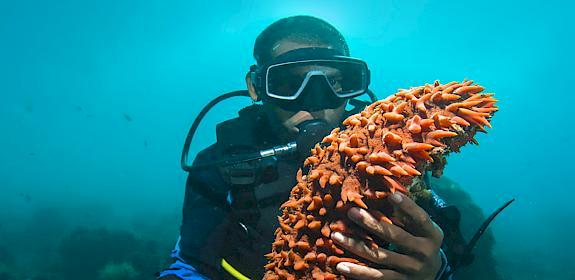Future of Asian snakes at stake
Guangzhou, China, 12th April 2011—A crucial meeting that could decide the future of Asia’s traded snake species takes place this week in Guangzhou, China.

Some 60 experts representing close to 20 governments and international and national organizations are meeting to consider conservation priorities and management and enforcement needs related to the trade of snakes.
They will focus on the markets and commercial trade in snakes originating in East, South, and South-east Asia.
Asian snakes are consumed locally and in neighbouring countries for food, traditional medicines and for their skins. They are also sold as pets and found in expensive luxury leather goods and accessories in the boutiques of Europe and North America. Their skins are often processed in various countries of re-export along the way.
According to a wildlife trade policy review conducted in Viet Nam, the income from snake breeding is three to five times higher than the income generated by vegetable and crop cultivation, and dozens of times higher than the income from pig and cattle breeding.
TRAFFIC has previously raised concern over the international exports of Oriental Rat Snakes Ptyas mucosus from Indonesia, after investigations revealed large numbers were harvested and traded outside of existing government regulations.
TRAFFIC found government-set quotas were being widely-flouted, leading to over-harvesting and illegal trade; and with no marking of skins taking place, it was impossible to track them through the trade chain to point of export.
“TRAFFIC welcomes the current spotlight on the international trade in Asian snakes, which is placing many species on the conservation danger list,” said Dr William Schaedla, Director of TRAFFIC South-east Asia.
“Snakes are clearly vital to natural ecosystems and to the economy of the region—it is in Asia’s interests to ensure snakes have a sustainable future.”
The global trade in snakes involves snake species from many different countries, with specimens taken from the wild or bred in captivity.
However, populations of some snakes have declined significantly through a combination of unsustainable use and habitat loss.
Of the 3,315 snake species globally recognized, one third occur in Asia, many of them endemic to particular countries: Indonesia has 128 endemic snake species, India 112, China 54, Papua New Guinea 42, Sri Lanka 41, and the Philippines 32.
CITES (the Convention on International Trade in Endangered Species of Wild Fauna and Flora) regulates international trade in 130 snake species, 45 of them found in range States in the Asian countries attending the workshop.
John Scanlon, Secretary-General of CITES, stated: “the global trade in snakes is an industry of considerable socio-economic importance for rural populations in several Asian countries.
“CITES is the main international tool to regulate effectively international snake trade in many of these species.
“The recommendations coming out of this meeting will be critical in addressing the wildlife conservation, sustainable use and livelihood aspects of such trade, and putting forward expert recommendations to CITES governing bodies for future directions.”
The technical workshop runs until 14th April under the leadership of CITES and brings together government experts, members of the CITES Animals Committee and organizations including IUCN and several of its Species Survival Commission specialist groups, TRAFFIC, WCS, UNCTAD-BioTrade, the China Wildlife Conservation Association and China Association of Traditional Chinese Medicine.




